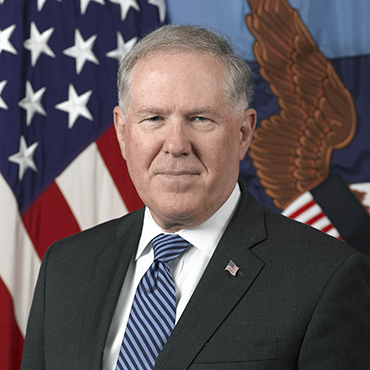Shielding innovation from DOD bureaucracy, mapping feds' local impact and more

News and notes from around the federal IT community.

Undersecretary of Defense Frank Kendall
DOD's Kendall: Innovation means 'freedom from bureaucratic
constraints'
At an Aug. 26 defense industry conference, Frank Kendall, the Pentagon's top acquisition official, philosophized about the Defense Department's approach to innovation while stressing "freedom from bureaucratic constraints" as a key ingredient.
Kendall, undersecretary of Defense for acquisition, technology and logistics, pointed to the Defense Advanced Research Projects Agency as an example of the necessity of such independence.
"I zealously guard DARPA's freedom from the many parts of the Defense Department who see DARPA's budget as an opportunity to fund something they need," he said at the Defense Innovation Days conference, according to a copy of his prepared remarks. "The whole concept of DARPA is that the organization has the freedom to choose its own high-risk but high-payoff investments."
Kendall also defended a provision in his Better Buying Power 3.0, the latest round of Pentagon acquisition guidance, that increases DOD officials' oversight of certain research and development efforts conducted by contractors. While acknowledging that the provision had "made industry a little nervous," Kendall said those worries are misplaced.
"The fundamental concern by industry has been the possible loss of freedom to make their own [independent R&D] investment decisions," he said. "That was never my intent."
NTIA wants researchers and vendors talking about software vulnerabilities
The Commerce Department's National Telecommunications and Information Administration is hoping to connect software developers and owners with the security researchers who find the holes in their systems, starting with a Sept. 29 meeting.
NTIA published a notice of the meeting on Aug. 28 and held a conference call to discuss its goals.
"Modern systems are so complex it's hard to guarantee that any system will be free of vulnerabilities," said NTIA Deputy Assistant Secretary Angela Simpson. "Our approach is to start with the common goal -- security -- and from there we will work to develop high-level goals" for vulnerability sharing.
The meeting, which is open to in-person participation and webcast viewers, will be an all-day event at the University of California, Berkeley, School of Law.
And what will come from the meeting? That depends entirely on which researchers, privacy groups, vendors and developers attend, officials said.
"NTIA acts as a facilitator," Simpson said, "but the community holds the pen and will drive the future of this process."
She added that the goal is for researchers and developers/owners to work together as security concerns are discovered rather than adopting adversarial stances.
OMB maps federal assistance to local communities
To note the 10th anniversary of Hurricane Katrina's landfall and destruction along the Gulf Coast, Office of Management and Budget Director Shaun Donovan posted an interactive map of projects that shows where the federal government is currently helping local communities across the U.S.
In an Aug. 26 blog post, Donovan trumpeted the importance of cutting across federal and local government silos to ensure that projects work effectively. Users can click on the map to learn more about government projects in their areas.
Donovan said data is a crucial tool in determining a project's success and progress. And although the map does not cover anything close to the totality of federal involvement at the local level, he described it as "a snapshot view of the Obama administration's community-based initiatives."
"It combines datasets from initiatives across more than 15 federal agencies," he said, "and we're adding datasets and features as we continue building it."
NSF and Intel invest in Internet of Things security research
The National Science Foundation, in partnership with Intel, announced two grants on Aug. 28 that will pump $6 million into research projects at the University of Pennsylvania and Stanford University.
Each project will investigate how cyber-physical systems can be secured as the Internet of Things becomes more pervasive in society.
"Our research aims to lay the groundwork and basic principles to secure computing applications that interact with the physical world as they are being built and before they are used," said Philip Levis, the leader of the Stanford team. "The Internet of Things is still very new. By researching these principles now, we hope to help avoid many security disasters in the future."
Researchers from other universities are also participating in the projects.
In its announcement, NSF heralded its partnership with Intel as a "new model of cooperation between government, industry and academia."
NEXT STORY: Why end-user device controls are critical


